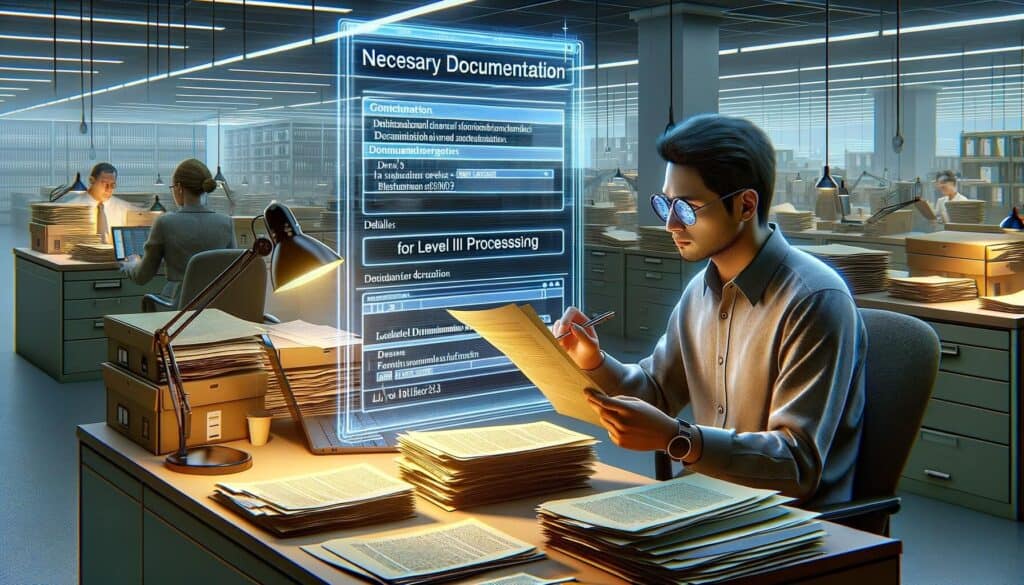
By Barbara Thomas March 11, 2025
Level III credit card processing rates are a specialized pricing structure offered by payment processors to businesses that engage in B2B (business-to-business) transactions. These rates are typically lower than traditional credit card processing rates and can result in significant cost savings for businesses that qualify. However, qualifying for Level III rates requires meeting specific criteria and providing additional documentation to the payment processor.
Understanding the Qualification Criteria for Level III Rates

To qualify for Level III credit card processing rates, businesses must meet certain criteria set by the payment processor. These criteria typically include the type of transaction, the level of transaction detail provided, and the industry in which the business operates.
One of the key criteria for Level III rates is the type of transaction. Level III rates are primarily designed for B2B transactions, where the buyer and seller are both businesses. These transactions often involve larger ticket sizes and more detailed information about the purchase, such as item descriptions, quantities, and unit prices.
Another important criterion is the level of transaction detail provided. Level III rates require businesses to provide a higher level of detail about each transaction compared to traditional credit card processing. This includes information such as the product or service description, quantity, unit of measure, unit price, and extended amount. The more detailed the transaction information, the higher the chances of qualifying for Level III rates.
The industry in which the business operates also plays a role in qualifying for Level III rates. Certain industries, such as government, education, and healthcare, are more likely to qualify for Level III rates due to the nature of their transactions and the need for detailed reporting.
Gathering the Necessary Documentation for Level III Processing

To qualify for Level III rates, businesses must provide additional documentation to the payment processor. This documentation is used to verify the eligibility of the business and ensure compliance with industry regulations.
One of the key documents required for Level III processing is a tax exemption certificate. This certificate is typically issued by the government and certifies that the business is exempt from paying certain taxes on its purchases. This is particularly important for businesses operating in industries such as government and education, where tax exemptions are common.
In addition to the tax exemption certificate, businesses may also be required to provide other supporting documents, such as business licenses, articles of incorporation, or proof of industry accreditation. These documents help establish the legitimacy of the business and its eligibility for Level III rates.
Optimizing Your Payment Processing System for Level III Rates

To maximize the chances of qualifying for Level III rates, businesses should optimize their payment processing system to capture and transmit the required transaction data accurately. This involves integrating the payment processing system with the business’s point-of-sale (POS) or enterprise resource planning (ERP) system to automatically capture the necessary transaction details.
One way to optimize the payment processing system is to use a payment gateway that supports Level III data. A payment gateway is a software application that facilitates the secure transmission of payment information between the business, the customer, and the payment processor. By using a payment gateway that supports Level III data, businesses can ensure that the required transaction details are captured and transmitted correctly.
Another optimization technique is to use a payment processor that specializes in Level III processing. These processors have the expertise and infrastructure to handle the additional data requirements and ensure compliance with industry regulations. By partnering with a specialized processor, businesses can streamline the qualification process and increase their chances of securing Level III rates.
Implementing Secure Payment Gateways for Level III Transactions

Security is a critical aspect of Level III credit card processing, as it involves transmitting sensitive transaction data between multiple parties. To ensure the security of Level III transactions, businesses should implement secure payment gateways that comply with industry standards and regulations.
One of the key security measures is the use of encryption technology to protect the transmission of payment information. Encryption converts the transaction data into a secure format that can only be decrypted by authorized parties. This helps prevent unauthorized access to the data during transmission and reduces the risk of data breaches.
Another security measure is the implementation of tokenization, which replaces sensitive payment information with a unique identifier called a token. The token is used for transaction processing, while the actual payment data is securely stored by the payment processor. This reduces the risk of data theft and minimizes the impact of a potential breach.
Leveraging Technology to Streamline Level III Processing
Technology plays a crucial role in streamlining Level III credit card processing and improving efficiency. By leveraging technology, businesses can automate the capture and transmission of transaction data, reduce manual errors, and expedite the qualification process.
One technology that can be used is automated data capture. This involves integrating the payment processing system with the business’s POS or ERP system to automatically capture the required transaction details. This eliminates the need for manual data entry and reduces the risk of errors.
Another technology that can be leveraged is electronic invoicing. Electronic invoicing allows businesses to send detailed invoices to their customers electronically, including all the necessary transaction data required for Level III processing. This not only speeds up the invoicing process but also ensures that the required data is captured accurately.
Furthermore, businesses can use reporting and analytics tools to monitor and analyze their Level III transactions. These tools provide insights into transaction volumes, average ticket sizes, and other key metrics, allowing businesses to identify trends, optimize pricing strategies, and improve overall performance.
Best Practices for Level III Data Entry and Reporting
Accurate data entry and reporting are crucial for qualifying for Level III rates and ensuring compliance with industry regulations. To achieve this, businesses should follow best practices for Level III data entry and reporting.
One best practice is to establish standardized data entry procedures. This involves defining clear guidelines for capturing and recording transaction data, including the required fields, formats, and units of measure. By standardizing data entry procedures, businesses can ensure consistency and accuracy in their Level III data.
Another best practice is to implement data validation checks. Data validation checks help identify and correct errors or inconsistencies in the transaction data before it is submitted for processing. This can include checks for missing or invalid fields, incorrect formats, or out-of-range values. By implementing data validation checks, businesses can minimize the risk of data errors and improve the quality of their Level III data.
Furthermore, businesses should regularly review and reconcile their Level III data with their internal records. This helps identify any discrepancies or inconsistencies and allows for timely resolution. Regular data reconciliation also ensures that the business’s financial records are accurate and up to date.
Common Challenges and Solutions in Qualifying for Level III Rates
Qualifying for Level III rates can be challenging for businesses, especially those that are new to B2B transactions or have limited experience with Level III processing. However, by understanding the common challenges and implementing appropriate solutions, businesses can increase their chances of qualifying for Level III rates.
One common challenge is the lack of transaction detail. Level III rates require businesses to provide a higher level of transaction detail compared to traditional credit card processing. This can be challenging for businesses that do not have systems in place to capture and record this information. To overcome this challenge, businesses should invest in POS or ERP systems that support Level III data capture and automate the process as much as possible.
Another challenge is the complexity of the qualification process. Qualifying for Level III rates involves meeting specific criteria and providing additional documentation to the payment processor. This can be time-consuming and confusing for businesses that are not familiar with the process. To address this challenge, businesses should seek guidance from payment processors or industry experts who specialize in Level III processing. These experts can provide valuable insights and help navigate the qualification process.
Furthermore, businesses may face challenges related to security and compliance. Level III processing involves transmitting sensitive transaction data, which requires robust security measures to protect against data breaches. To address this challenge, businesses should partner with payment processors that have a strong focus on security and compliance. These processors can provide the necessary infrastructure and expertise to ensure the security of Level III transactions.
Frequently Asked Questions about Level III Credit Card Processing
Q: What are Level III credit card processing rates?
A: Level III credit card processing rates are a specialized pricing structure offered by payment processors to businesses that engage in B2B transactions. These rates are typically lower than traditional credit card processing rates and can result in significant cost savings for businesses that qualify.
Q: How do I qualify for Level III rates?
A: To qualify for Level III rates, businesses must meet certain criteria set by the payment processor. These criteria typically include the type of transaction, the level of transaction detail provided, and the industry in which the business operates.
Q: What type of transactions are eligible for Level III rates?
A: Level III rates are primarily designed for B2B transactions, where the buyer and seller are both businesses. These transactions often involve larger ticket sizes and more detailed information about the purchase, such as item descriptions, quantities, and unit prices.
Q: What documentation do I need to provide for Level III processing?
A: To qualify for Level III rates, businesses may need to provide additional documentation to the payment processor. This can include a tax exemption certificate, business licenses, articles of incorporation, or proof of industry accreditation.
Q: How can I optimize my payment processing system for Level III rates?
A: To optimize your payment processing system for Level III rates, you should integrate it with your POS or ERP system to automatically capture the necessary transaction details. You should also use a payment gateway that supports Level III data and partner with a payment processor that specializes in Level III processing.
Q: What security measures should I implement for Level III transactions?
A: Security is a critical aspect of Level III credit card processing. You should implement encryption technology to protect the transmission of payment information and tokenization to replace sensitive payment data with tokens. This helps prevent unauthorized access to the data and reduces the risk of data breaches.
Conclusion
Level III credit card processing rates offer businesses the opportunity to save on transaction costs and streamline their B2B transactions. However, qualifying for Level III rates requires meeting specific criteria, providing additional documentation, and implementing secure payment gateways.
By understanding the qualification criteria, gathering the necessary documentation, optimizing the payment processing system, leveraging technology, following best practices for data entry and reporting, and addressing common challenges, businesses can increase their chances of qualifying for Level III rates. By doing so, they can enjoy the benefits of lower transaction costs and improved efficiency in their B2B transactions.